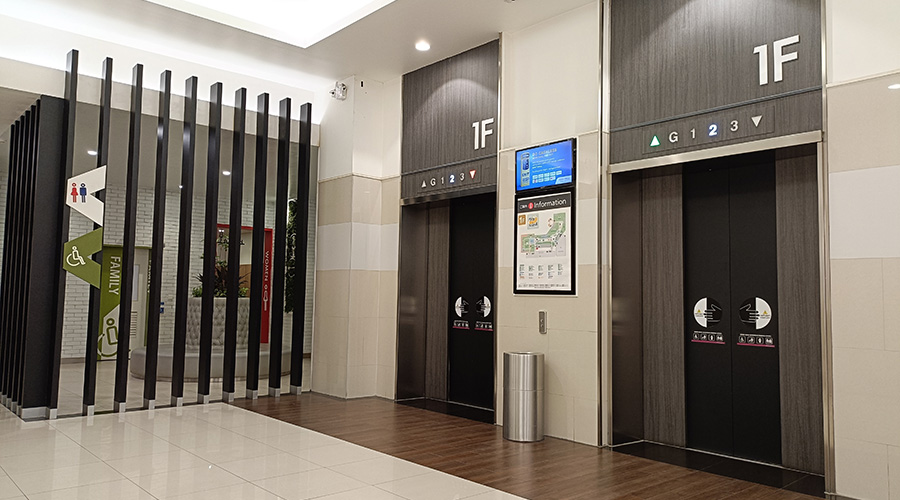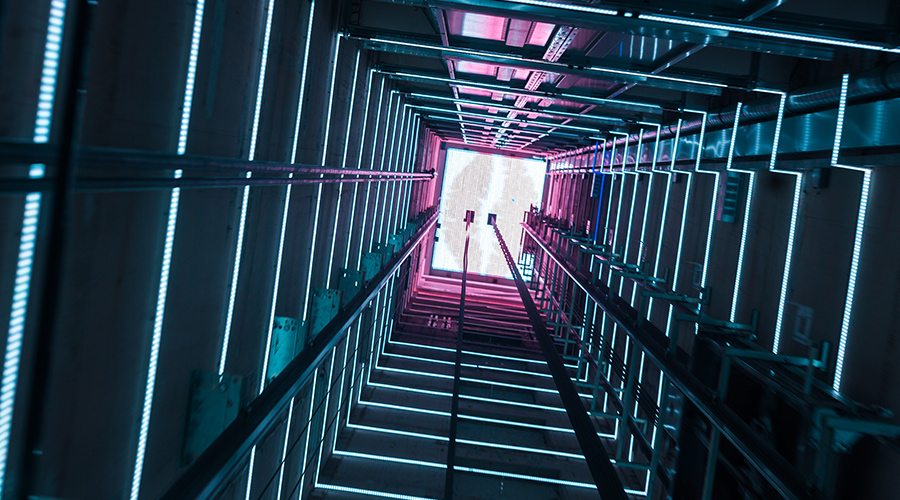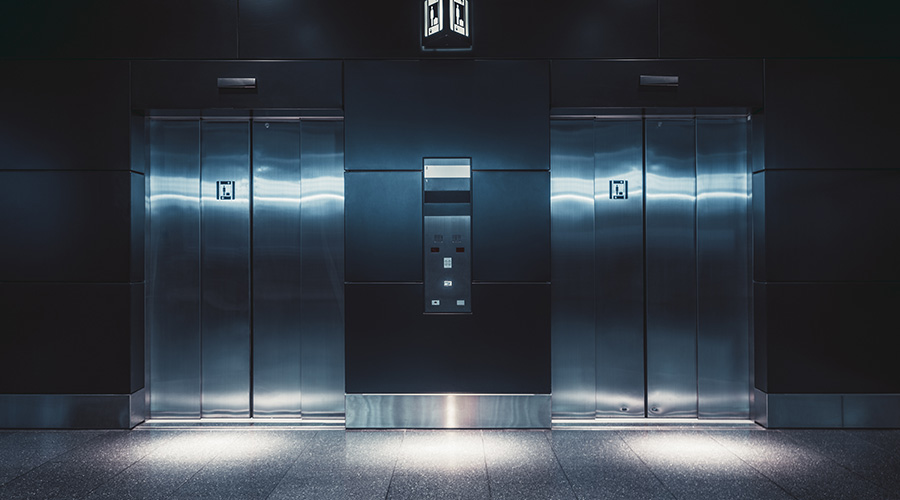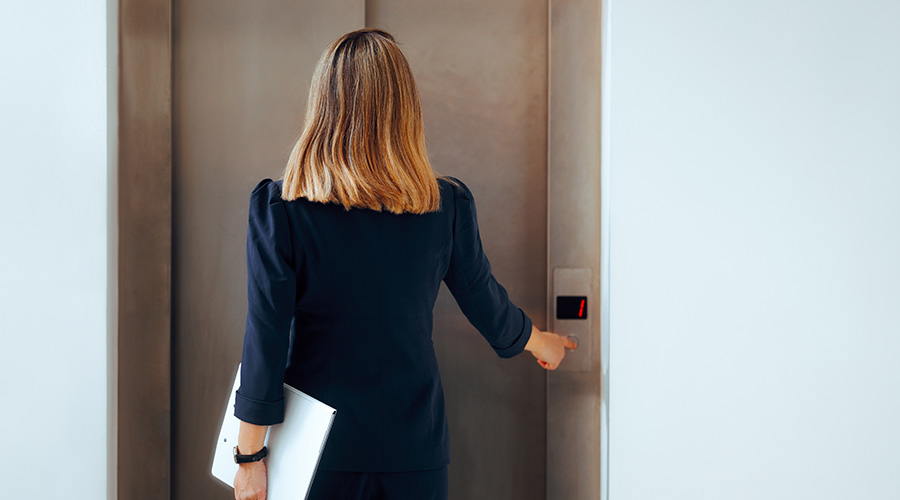Elevators: No Margin for Down Time
If there’s one thing that really annoys facility occupants, it’s an out-of-service elevator. Here’s how to keep elevators up and running
Although elevators are more reliable and easier to maintain than in the past, the growing demand for convenience and access has raised the bar for reliability. Today, building occupants and visitors alike expect 100 percent reliability.
Unfortunately, elevators tend to be overlooked until something goes wrong. Compounding the problem is the fact that, as the sophistication of elevators has increased, so has the need for maintenance. While the components may be more reliable, the sheer number of them combined with tight tolerances demand a higher level of maintenance than did the old electromechanical systems. Failure to keep up with maintenance will harm performance, slow response time, increase downtime and raise costs.
Each elevator system has maintenance requirements established by codes and the manufacturer. Beyond those mandates, however, are general maintenance activities that all facilities should perform.
One of the most common, expensive and irritating problems with elevators is vandalism. Vandals can destroy the appearance of an elevator. More importantly, they can interfere with the operation of the elevator — even compromise safety. While it is impossible to prevent all vandalism, several steps can reduce it.
All interior finishes and fixtures should be made from vandal-resistant materials. As many of those components as possible should be easy to replace. When vandalism does occur, damaged items should be replaced quickly to prevent further vandalism. In some buildings, it may be necessary to inspect elevators on a weekly or even daily basis.
Another step to curb vandalism is making certain elevators are operating efficiently. A defective relay or a damaged door track can slow performance. Long wait and travel times can produce frustration that leads to vandalism.
At least every six months, average wait times and elevator speed should be checked and recorded. Monitor readings to see if performance is deteriorating. Even if performance is constant, owners of elevators with older controls may consider upgrading to new solid-state controls to improve performance.
Overheating
One of the most common causes of elevator malfunctions is overheating of the drive and control system. Electromechanical control systems are not particularly sensitive to operating temperatures. But microprocessor-based systems are much less tolerant of high or low operating temperatures, high humidity, dust and dirt.
The problem is that elevator equipment is often found in places where environmental conditions are not ideal. Control systems for hydraulic elevators are typically located in an enclosed basement area with little or no ventilation or regulation of humidity. Heat from hydraulic pumps and solid-state controls during high-use periods can easily raise room temperatures to the point where components overheat.
The location of equipment for traction elevators is even worse. The drive and control system generally are located in a penthouse above the roof. Ventilation is provided by louvers on the penthouse walls. These louvers allow heat generated by the roof as well as moisture and dirt to enter. As a result, elevator equipment room temperatures can exceed 100 degrees on warm, sunny days.
Ventilation fans have been used frequently to control temperatures. But these fans draw in warm, moist air and dirt from the roof. As dirt accumulates on elevator components, it can form a layer of insulation, producing even higher operating temperatures.
The best way to prevent overheating is to install a dedicated cooling system. By using 100 percent recirculated air, the system can regulate both temperature and humidity levels while keeping dirt and dust out. When installing the system, it is important that any existing ventilation louvers, doors and other openings be properly sealed.
Emergency Generators
Most buildings have at least one elevator connected to the emergency generator. But when utility power goes out, the generators can create problems for solid-state elevator components, which can in turn lead to complications for other equipment connected to the emergency power system. Since buildings rarely operate on emergency power, these problems are frequently overlooked.
The widespread use of solid-state components and variable frequency drives creates conditions where an emergency generator may not be able to provide clean power to an elevator. Older generators in particular have difficulty responding to the rapid changes in current required by solid-state elevator drives. The result can be variations in system voltage and frequency; both can damage components in the elevator control system. Voltage sags caused by the starting of motors powered by the emergency generator can exceed the tolerances of the elevator’s drive and control system, shutting down the elevator or damaging its components.
Improper grounding of the generator, elevator or other devices connected to the emergency power system can increase harmonics and radio frequency interference, which can damage the elevator equipment and other sensitive electronic devices.
To prevent problems, the system should be tested at least once a year. Testing should include monitoring the quality of power supplied by the generator with loads connected. If interference is detected, sources must be found and fixed.
Planned Maintenance
By far the most effective way to minimize elevator breakdowns is a comprehensive planned maintenance program. Planned maintenance can eliminate many common problems like improper door operation, inaccurate stopping and inoperative safety devices. Most facilities opt for a maintenance contract.
These contracts offer a wide range of coverage, from basic breakdown repair to full-service contracts that include insurance against accident claims. If the contractor is selected primarily on a cost basis, the facility may not be getting the coverage it needs.
Before signing a maintenance contract, facility executives must understand the needs of their facility. What type of equipment is installed? How many elevators are there? How old are they? Have there been significant upgrades to equipment or control systems? What have been past maintenance requirements? The answers to these and other questions will help to determine what type of contract is best suited for the facility.
At a minimum, the contract should include all maintenance activities recommended by the manufacturer and all safety testing required by the local jurisdiction and by the manufacturer.
When evaluating options, do not always go with the lowest cost contract. Lower costs generally mean fewer labor hours spent maintaining the elevator and fewer parts being replaced under the contract. The result will be higher overall costs due to more rapid deterioration of elevator components.
Remote Monitoring
Given the demand for reliability, facility executives may consider a remote monitoring system for elevators.
These systems supervise the operation of all elevators in a particular building. By monitoring and recording key operating parameters, they can detect developing conditions that may disrupt service before a failure occurs. Operating parameters are then made available to maintenance technicians to help in diagnosing and correcting the developing problem. The result is a reduction in system downtime, improved response time and decreased owner liability.
Elevators are a major capital investment for building owners and managers. A carefully constructed maintenance program is the only way to minimize operating costs while achieving the performance from the investment made in the elevator system.
James Piper, PhD, PE, is a writer and consultant who has more than 25 years of experience in facilities management. He is a contributing editor for Building Operating Management.
Related Topics:











